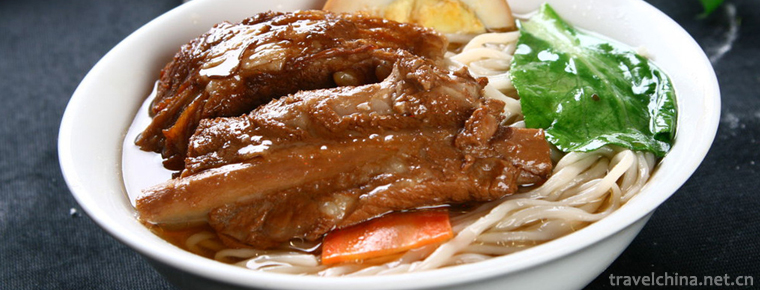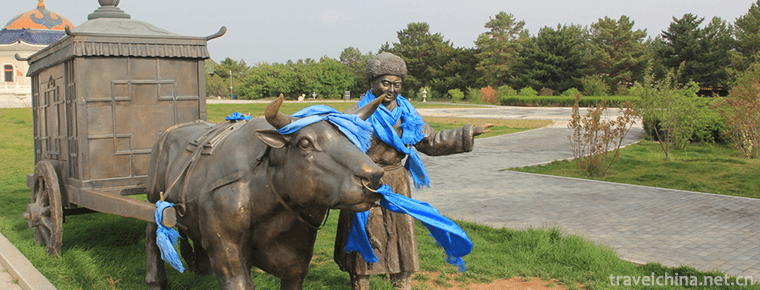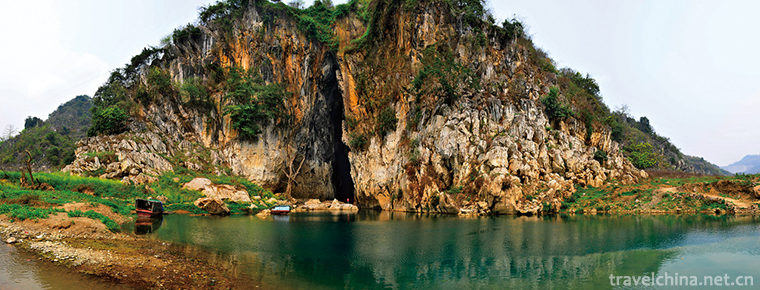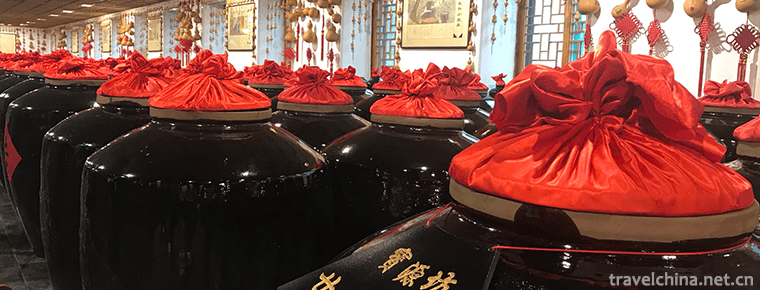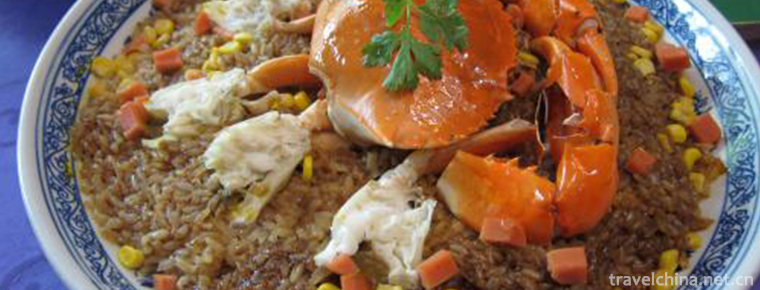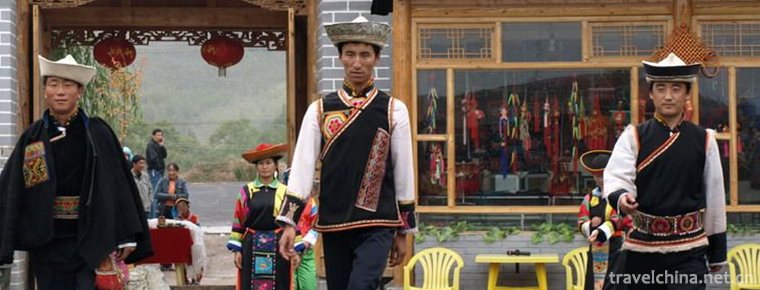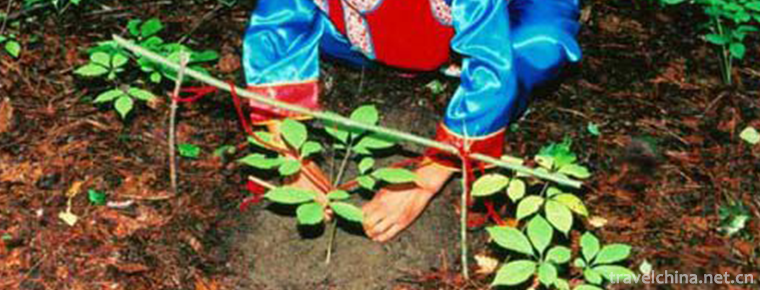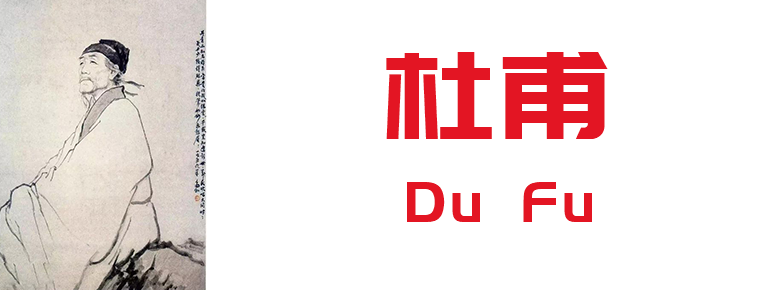Hongtong Dahuaishu Ancestor Memorial Garden
Located in Hongdong County, Shanxi Province, Hongdong Dahuashu ancestor-seeking scenic spot is the only national sacrificial site with the theme of "root-seeking" and "ancestor-sacrificing". The national AAAAA-level tourist scenic spot , the key cultural relics protection unit of Shanxi Province, in 2008 Dahuashu ancestor-sacrificing custom was listed as a national intangible cultural heritage list.
The scenic spots are divided into four major thematic areas: Immigration Monument Area, ancestor worship Activity Area, Folk Custom Tourist Area and Fenhe Ecological Area. There are more than 60 scenic and cultural attractions such as Stele Pavilion, Second and Third Generations of Sophora japonica, Millennium Sophora Root, ancestor worship hall, Guangji Temple, Shijing Building, Immigration relief map, Chinese surname garden, etc. .
From Hongwu in Ming Dynasty to Yongle in 15 years, there have been 18 large-scale official immigrants under Sophora japonica trees in the past 50 years, mainly moving to 18 provinces, including Beijing, Hebei, Henan, Shandong, Anhui and Jiangsu, and more than 500 counties and cities. After six hundred years of migration and reproduction, nowadays, wherever there are Chinese people in the world, there are descendants of Sophora japonica immigrants. Sophora japonica tree in Hongdong has long been deeply rooted in the hearts of the descendants of Yan and Huang Dynasty to recognize their ancestors and return to their ancestors. It is regarded as "home", "ancestor" and "root".
The large-scale immigrants in Hongwu and Yongle years of Ming Dynasty were the largest, most extensive, organized and planned migration in Chinese history. It has certain historical significance in restoring production, increasing population, developing economy, developing frontier, national unity and cultural exchanges. The migration lasted for 50 years, involving 1230 surnames. Hundreds of millions of descendants of immigrants moved from here to other places.
On March 29, 2018, the 28th Hongdong Great Sophora Tree Cultural Festival, with the theme of "loyalty and filial piety all over the world", opened. During the Cultural Festival, activities such as the opening ceremony of the 28th Hongdong Great Sophora Tree Cultural Festival, the 11th Hongdong Famous Snack Festival, traditional opera performances, the 28th Hongdong Great Sophora Tree Cultural Festival and the 3rd Hongdong Great Sophora Tree Immigration Cultural Seminar were held.
historical background
The large-scale immigration in Hongwu and Yongle years of the Ming Dynasty had its historical background and historical reasons, which naturally began with the history of the late Yuan Dynasty.
The Yuan Dynasty ruled China only in 98 years, "only knows how to bend bows and shoot big carvings". By the end of the Yuan Dynasty, due to the cruel exploitation and oppression of peasants by Mongolian nobles and feudal landlords, the intensification of class contradictions and ethnic contradictions, the continuous epidemic of locusts and droughts, and the lack of livelihood of the people, Henan, Shandong, Hebei and other central plains areas "all roads are hazel, people are cut off" (Records of Ming Taizu Volume 29), the people can not live. To survive, only to rise up against the brutal rule of the Yuan Dynasty. Only in the first year of the year (1341), more than a hundred people's revolts against Yuan took place in Shandong, Hebei and Huguang. Later, the people's uprisings became more frequent and more powerful. In the eighth year, Fang Guozhen rebelled in Taizhou, and in the Eleventh year, Liu Futong rebelled in Yingzhou, known as the Red Scarf Army, and Xu Shouhui rebelled in Qizhou. Guo Zixing and Zhu Yuanzhang uprised in Haozhou in the twelfth year, and Zhang Shicheng uprised in Taizhou in Jiangsu in the second year. Over the next ten years, especially when Liu Futong's Red Scarf Army and the Yuan Army fought decisively in Anhui, Henan, Shandong and Hebei, the peasants responded one after another. The Yuan Army, with its elite troops, would fight the peasant army decisively, seize cities and land, plunder and kill people, and do atrocious things.
In September of the twelfth year, the Prime Minister of the Yuan Dynasty "broke away from Xuzhou and slaughtered the city" (The Biography of the History of the Yuan Dynasty). Up to the seventeenth and twenty-first year of the Yuan Dynasty, the Chahantimur Department of the Yuan Army fought with the peasants. "Both wars were defeated and more than 10,000 ranks were beheaded" (Biography of Chahantimur of the Yuan Dynasty). In November of the eighteenth year, the Yuan Army "Liu Qi rented and kept Shunde, forfeited people and property, looted cattle and horses, and the strong people ordered them to be recruited, while the weak killed and ate them" (Yuan Shishun Emperor's Benji). Later, when the regular army of the Yuan Army was exhausted, it was unable to suppress the peasant insurgent army. Some landlords armed themselves. In order to safeguard their own interests, they also cooperated with the Yuan Army in fighting with the peasants. The father and son of Wang Baobao (Expanded Timur) of Shanxi Province, Li Siqi of Shaanxi Province, also sent troops to Henan, Shanxi, Shandong, Shandong and Lianghuai provinces, and finally suppressed the Red Scarf Army. In these battles, the Yuanjun and landlord armed forces mostly took the place of the peasant army by "pulling out the land and slaughtering the city" ("Yuan Shishun Emperor's Benji"), which resulted in the death of seventy-eight people in Henan, Shandong, northern Jiangsu and Northern Anhui. Only eighteen people were killed in the famous city of Yangzhou at that time. (Records of Ming Dynasty in Zushi Volume 5) The Niu Family Genealogy of Niuwa Village in Wenxian County also contains: "The soldiers killed Henan, Chidi thousands of miles." It was in the situation of "spring mud returning to no habitat, red land thousands of miles and few people" that Zhu Yuanzhang sent troops to the Yangtze and Huaihe rivers, sent Xu Da and often met with the Northern Expedition of Spring, marched into Shandong, recovered Henan, Beiding Kyoto, and the Emperor of Yuan left Mobei. Only then did the sixteen-year military turmoil in the end of the Yuan Dynasty come to an end.
In the late Yuan Dynasty, besides military disturbances, water, locusts and epidemics continued. The Huang and Huaihe rivers have broken their mouths many times, making the Central Plains "drifting fields and countless dead people, villages and cities become ruins." According to the History of Yuan Dynasty, there were only 19 rains and droughts in Shandong, 17 in Henan, 15 in Hebei and 8 in Huaihe and Huaihe regions in the late Yuan Dynasty. (Records of the Five Elements in the History of the Yuan Dynasty)"caused"drifting people and the dead"(Records of Emperor Shundi in the History of the Yuan Dynasty),"not entering the ground and eating each other"(Records of the Five Elements in the History of the Yuan Dynasty). From the first year to the twenty-sixth year, almost every year, there were huge floods."In the first year of the Yuan Dynasty, Biliang and Junzhou flooded.
In April, 2002, Yifeng County, Suizhou, suffered from severe flooding. On the ugly night of June, Jinan's mountains and rivers rose sharply, rushing to the East and west two passes, flowing into the Xiaoqing River, Heishan, Tianma, Shigu villages and Wolong mountains and rivers flowed into the Daqing River, drifting more than a thousand homes of residents up and down, and drowning people were countless. Three years in February, Gong Chang Ningyuan, Fuqiang and Chengji counties, landslides and floods, drowning is not counted. Maokou, the Yellow River, in May. In July, there were four counties in Bianliang, Zhongmou, Fugou, Weishi and Fengchuan, Xingyang, Heshui and Heyin in Zhengzhou. In May of four years, Bazhou flooded. In June, a heavy rain in Gongxian County, Henan Province, overflowed the water in Yiluo and Hundreds of drifting houses. Yanzhou, Bianliang, Yanling, Tongtong, Chenlu, Linying and other counties in Jining Road suffer from serious water hazards and people eat each other. In July, the Luanhe River overflowed into the flat land, and there were not many crops on Yongping Road. Dongping Road Donga, Yanggu, Wenshang, Pingyin four counties, Yazhou Xi'an County Dashui.
In July of the fifth year, the river broke to the shade and the drifting officials and people's pavilions were exhausted. In October, the Yellow River flooded. In May of the seventh year, Huangzhou flooded.
Eight January 1911, Hedung, Jining Road. June has been ugly, Zhongxing Road Songzi County rainstorm, water soaring, flat ground deep more than five feet, drifting more than 60 miles, the deceased 1,500 people. It's the month, Jiaozhou floods. In July, Gaomi County flooded. In July, 1999, Zhongxing Road Public Security, Shishou, Qianjiang, Jianli and other counties and Wuyang Prefecture flooded. Summer and autumn, Qizhou floods hurt crops.
In June of twelve years, there was a torrential rain in Songzi County, Zhongji Road, and the water rose sharply. More than a thousand houses were drifted and 700 people drowned. In July, Dashui County, Yazhou County, Xi'an. In the summer of thirteen years, four counties of Fengrun, Yutian, Zunhua and Pinggu were flooded.
In June of fourteen years, a heavy rain in Fugong County, Henan Province overflowed Iraqi and Luoshui waters, drifting residents and drowning more than 300 people. Autumn, Jizhou flood.
Sixteen years later, Hejue, Heyin County, Zhengzhou, was abandoned and became a middle stream.
In June of seventeen years, summer rains overflowed the Zhanghe River, and Guangping prefectures and towns were all watery. In autumn, Jizhou County is flooded. In the autumn of eighteen years, both Jingshi and Jizhou were flooded. Nineteen September, Jeju Rencheng County Hejue. In July of the twentieth year, Tongzhou flooded. March 22, Shaowu Guangze County, Dashui. Twenty-three years, Jiyuan, Mengzhou, Wenxian Dashui. In July, people drowned in Dongping County, Shouzhang County, Hejue City Wall, floating houses and luxuries. In March of 24 years, the wells in Yidu County overflowed and turned yellow. Huaiqing Road Mengzhou, Hanoi, Wuzhu County Water. In July, water in Tingguang County and Gaomi County of Yidu Road. In the autumn of 25 years, Jizhou flooded. Dongping Xucheng, Donga and Pingyin three counties, Xiaoliukou, reached the Qinghe River, bad dwellings and injured crops. In February of 26, Hebei migrated from Dongming, Cao and Pu to Jining. In June, it rained heavily in Henan Province, and the water overflowed. Hundreds of residents of Piaodongguan lived in four counties of Jizhou, Weihui, Bianliang and Junzhou in autumn and July. In August, the Daqing River in Dizhou was settled, and the boundary between Bindi and Binzhou was covered with drifting houses. Jining Road, Feicheng County, West Yellow River flood overflow, drifting Tianhe residential more than 100 miles, Texas Qihe County, more than 70 miles. (Records of the Five Elements in the History of the Yuan Dynasty) There are many such records in the History of the Yuan Dynasty. Especially in Henan Province, there are huge floods almost every year. The Ministry of Household Affairs of Zhongshu Province once said, "Floods and droughts in successive years have prevented crop harvesting." (Yuan Shishun Emperor's Benji) At that time, a river minister also said that the Central Plains region "hunger for years, people do not have to live." (Volume 2 of Chronicles of the Yuan Dynasty).
At the end of the Yuan Dynasty, not only floods were serious in Central Plains, but also locust plagues occurred frequently. From the first year to the twenty-five years, there were 89 locust plagues. (Records of the Five Elements in the History of the Yuan Dynasty) Daming Road in the Yuan Dynasty reached "Eleven Counties in Yuancheng County, Kaizhou, Slipping and Dredging, with 716,900 hungry people" in June of the twelfth year. From the third year of the Yuan Dynasty to the end of the Yuan Dynasty, there were fifteen famines in the Central Plains (the Five Elements of the Yuan Dynasty) and seventeen years in Henan Province. Eighteen years ago, "Beijing Normal University was famished, so was Zhangde". In the nineteenth year of the Great Hunger in Hebei, Shandong and Henan, the people of Tongzhou killed their sons and ate them. Baoding Road is full of evils, and the sergeants grab the weak to eat. Mengjin, Xin'an and Mianchi in Shandong and Henan provinces witnessed the tragic situation of "people eating locusts and people eating each other". At the same time, the plague with great harm has been prevalent in Henan, Shandong, Hebei, Shaanxi and other southern provinces for many times. (Records of the Five Elements in the History of Yuan Dynasty).
All of the above, war and turmoil, drought and locust epidemic complement each other, the people fled, making the Central Plains area sparsely populated, barren land, the Yuan government had to reduce some roads to states, such as "Xuzhou Road for Wu'an Prefecture". (Yuan Shishun Emperor's Benji) It was in the Ming Dynasty that many states and governments had to be demoted due to the dramatic reduction of grain and human resources. Kaifeng, a famous city, was demoted from the government to the lower government (Records of Ming Taizu Volume 96, 193). In the past ten years, Hungwu and other prefectures and counties under the Secretary of Budget and Administration of Henan Province have "too many household grain to count", "twelve County-to-county changes in Fanzhou, and sixty County-to-county mergers". (Records of Ming Taizu) Volume 120, 164) By the seventeenth year of Hongwu, more than 30 prefectures with fewer than 3000 households had been reduced to counties throughout the country. (Records of Ming Taizu Volume 164).
After the establishment of the Ming Dynasty, officials from all over the country reported desolate situations to the Ming government. The Central Plains area was "barren for a long time due to inadequate manpower" (Records of Ming Taizu Volume 148), with a large number of bones and few residents"(Records of Ming Taizu Volume 176),"mostly no one's land"(Gu Yanwu's Records of Sun). Even Zhu Yuanzhang knows that "after the upheaval, the Central Plains was reckless, the people were scarce, the so-called field exploited, and the household registration increased, which is in the middle of it." The original urgent task"(Records of Ming Taizu Volume 25), so adopted Suqi (Records of Ming Taizu Volume 50), Liu Jiugao (Records of Eating and Loaning in Ming History), Guozijian Songna and others, in order to safeguard the feudal rule of Ming Dynasty, decided on the war path decision of resettlement and farming (Records of Ming Taizu). Record), a large-scale immigration climax that has gone through several dynasties for more than 50 years began.
During the Hongwu period of the Ming Dynasty, a large number of immigrants began to migrate. Agricultural production had just been restored, and the battle of "Jing Nan" took place again. The four-year War aggravated the desolate situation in the Central Plains, for which there was still the move of Yongle to relocate the people.
After Zhu Yuanzhang's death, Emperor Jianwen succeeded. In order to consolidate the centralization of power, he took the measures of "cutting down the Fan". Zhu Ding, the king of Yan, in the name of entering Beijing to attack adultery, went from Beijing to Nanjing, through Hebei, Henan, Shandong and Anhui, and fought repeatedly with the government troops for four years. This is the prevailing story in the Central Plains. The so-called "Sweeping the Stele by King Yan". At that time, people in some areas also organized their own armed forces to resist the army of King Yan, which reflected the people's desire to live and work in peace and contentment and resume production.
According to the Ming History, the Yan Army plundered and massacred seriously during the war, such as "the Yan Army plundered Zhending, Shunde, Guangping and Daming". (Ming Shi Gong Min Emperor Benji) In the real "30,000-level beheading", "Baigou River battle, Yan Wang" by arson, beheading tens of thousands, drowning more than 100,000 people. (Chengzubenji of Ming Dynasty) After the people in Central Plains helped the government troops to fight against Zhu Di's victory, they killed the army and people loyal to Emperor Jianwen. According to some genealogy records in Hebei and Shandong, when the King of Yan attacked the border between Hebei and Henan, he was subjected to the local armed "Eighteen Villages". In the forty years of Guangxu's "Li Clan Genealogy" written by Guangxu, Zhaicun, Linqing County, Shandong Province, it is recorded that when King Gaiyan Jingdi began to build up troops in the north and south, and when the Southern Army pursued, the Southern Army was from the south to the north, while the Northern Army was victorious to the prisoner. From the north to the south, when you want to kill, scrape, or flee, six or seven hundred miles east and west, nearly a thousand miles north and south, mostly hilly ruins.
Therefore, the battle of Jing Nan aggravated the desolate situation in the Central Plains, and the people fled without killing, which is another reason for Yongle immigrants. At the end of the Yuan Dynasty, Shanxi was a different kind of scene. The military disturbances and all kinds of plagues in the Central Plains seldom affected Shanxi. Most of Shanxi did not suffer from large floods, droughts and insects. Wind and rain had a bumper harvest. Compared with neighbouring provinces, the society was stable, the economy was prosperous, and the people were flourishing. Zhong Di of the Yuan Dynasty was in the Hezhong Prefecture (Hezhong Prefecture). Puzhou) Xiucheng Ji said: Nowadays, the fire is burning in the air, the north and south of the Honghe River (Yellow River) are exhaustive, while the residents on the east side of the river are busy, looking up for something to do and bent over to nurture. Although this is a praise of feudal scholars, it also shows that the Jinyi belt is relatively stable, coupled with the influx of refugees from neighbouring provinces into Shanxi, making the population of southern Shanxi a dense flood. In the fourteenth year of Wu Dynasty, the population of Henan was more than 18.91 million, and that of Hebei was more than 18.93 million, while that of Shanxi was 4.030 million and 4.455, which was the total population of Hebei and Henan.
Immigration textual research
Textual Research on the Facts of Immigrants: (Records of Ming Taizu Volume 140)
1. 1373. "Six years in Hongwu, Fengyang in Zhendingmin Tun, Shanxi Province".
2. 1376. "(Hongwu) In November of 1999, those who relocated to Shanxi and Zhendingmin without industry were sent to Tuntian in Fengyang to give them winter clothes." (Hongwu) In November of 1999, Tian Fengyang, a proletarian in Shanxi and Zhendingmin, was moved.
3. 1380. In May of thirteen years, Shanxi civilians were more than twenty-four thousand military households, and they were still serving the people.
4. 1388. "(Hongwu) In August of the twenty-first year, the people of Ze and Lu prefectures in Tushan live in the idle places of Changde, Zhending, Linqing, Guide and Taikang." In August of 21, Mianze and Lumin unemployed reclaimed Henan and Beitan, and gave money and furniture for three years.
5. 1389. In September 22, Zhu Rongqu, the governor of the rear army, said, "All the poor in Shanxi who migrate to the three provinces of Daming, Guangping and Dongchang give Tian 2672 hectares".
6. 1389. "In September 22, Zhang Congquan and other 116 advertisements in Qinzhou, Shanxi Province, wished to recruit tuntian. The Ministry of Household Affairs heard about them and ordered them to be rewarded with first-class bills, which were distributed to them by Xu Li, the governor of Qinzhou, after delivery."
7. 1932. "(Hongwu) In August 25, Feng Sheng, Fu Youde, Shuai Kaiguo, Changsheng and other branches of Shanxi Province, the people as the army, Tuntian in Datong, Dongsheng, Lisixteen Wei." "(Hongwu) In August 25, Feng Sheng and Fu Youde set up farmland in Datong. Ding Jiuwei, elector of Pingyang, Taiyuan, Liao, Qin and Fen, and Ding Qiwei, elector of Pingyang. Five thousand and six hundred people per Wei.
8. 1932. "(Hongwu) In December 25, Li Ke and Xu Li returned to Beijing as governors of the rear army. First, the people of Shanxi were instructed to move to Changde, and even to return the report. There were 598 households of seven unaccompanied households, such as Changde, Weihui, Guangping, Daming, Dongchang, Kaifeng and Huaiqing.
9. 1935. "In the first month of the twenty-eighth year, 26600 horsefoot officers and soldiers from Shanxi went to build cities and settle fields in Saibei."
10. 1402. "(Hongwu) In September of thirty-five years, people who migrated to Shanxi and had no land in Shibeiping were given banknotes for another five years." "(Hongwu) In September 35, the Ministry of Household Departments sent officials to verify that Taiyuan and Pingyang prefectures, Ze, Lu, Liao, Fen and Qin prefectures, Dingduotian Home with little or no land, were divided into the prefectures and counties in the north of Dingkou."
11. 1403. "(Yongle) In August of the first year, he was convicted of farming for the people in Beijing. The rest were exempted from guilt and were weaved into Lijia without sticks, and their wives, sons and sons were sent to Beijing and Yongping prefectures and counties to farm for the people. Ritual Commentary: Shandong, Shanxi, Shaanxi and Henan Sibu Secretaries compiled Lijia for Benbu Secretaries, and learned from them.
12. 1404. "(Yongle) September, 2002, migrated to Shibeiping, Shanxi Province. "(Yongle) September, 2002, migrated to Taiyuan, Pingyang, Ze, Lu, Liao, Fen and Qinmin Wanhushibeiping in Shanxi Province."
13. 1405. "In September of the third year (Yongle), ten thousand households in Tushan were in Shibeiping." "In September of the third year (Yongle), he moved to Taiyuan, Shanxi Province, Pingyang, Ze, Lu, Liao, Fen, Qinmin, Wanhushibeiping."
14. 1406. "In the first four years of Yongle, 240 officials, such as Li Mao, from Huguang, Shanxi and Shandong provinces and counties, expressed their wish to serve the people of Beijing. The Ministry of Household Affairs is required to send it to Daoli.
15. In 1407, "(Yongle) in May, five thousand households in Pingyang, Ze, Lu, Shandong Zhideng and Lai prefectures of Shanxi Province were subordinated to Lin Yuan Jian for animal husbandry and cultivation. The household fees a hundred ingots and five buckets of rations.
16. 1414. "In March of the twelfth year, Shangyi (Longqing) was the most important place to go, while Longqing Prefecture was the prefecture where crops were suitable for local use, and those who were guilty of relocation were the real ones." "The original edition of Honshu is in the southeast, southwest, northeast, northwest four corners, Hongmen, Huangbao, Baimiao, Banqiao, Fufu, and Hongsi six tun. It is said that the first ten miles were filled by officials. Yulin, Shuangying, Xisangyuan, Nihe, Qiaodao, Xinzhuang, Dongyuan, Baolin and Zaominjiutun were relocated to Shanxi and other places ten miles after Guanxiang. Each household pulled out 50 mu of land and allowed for grain shortage.
17. 1416. (Yongle) In November, fourteen years, migrants from Shandong, Shanxi and Huguang were sent to Baoan Prefecture for three years. "In November, 14 years of Yongle, more than 2,300 refugees from Shandong, Shanxi and Huguang lived in Baoan Prefecture and were exempted from taxes and corvee for three years."
18. 1417. "(Yongle) In May of the fifteenth year, Shenwai Mountain of Pingyang, Datong, Yuzhou and Guangling prefectures in Shanxi Province said,'Beggars are divided into Beijing, Guangping, Qinghe and other leisure places, occupying the nationality of the people, pulling out the fields and cultivating them, paying taxes according to the rules, and the people will not lose their homes'. It is still free of rent for one year.
Distribution of immigrants
According to the records of Ming History, Ming Shi Lu, Rizhi Lu Yu and other official history and note-taking historical materials, the immigrants of Hongtong Great Sophora japonica are distributed in 30 provinces and cities, 2217 counties and cities. Among them, 123 counties and cities in Henan, 142 in Beijing, Tianjin and Hebei, 109 in Shandong, 104 in Shanxi, 316 in Jiangsu, Anhui, Hubei and Hunan, 182 in Shaanxi, Gansu and Ningxia, 171 in Heilongjiang, Jilin and Liaoning, 227 in Zhejiang, Fujian and Jiangxi, and Guangdong, Guangxi and Guizhou. There are 248 counties and cities in the prefecture, 274 counties and cities in Sichuan, Inner Mongolia and Qinghai, 210 counties and cities in Yunnan, Tibet and Xinjiang, and 111 counties and cities in Hainan and Taiwan. In addition, overseas immigrants are mainly distributed in more than 100 countries in Asia, Africa, Europe, America and Oceania.
In February 1994, Jiang Zemin, then General Secretary of the CPC Central Committee, inspected the tourist attraction of the Great Sophora Tree Root-seeking and ancestor-sacrificing Garden in Hongdong ; in April, Qiao Shi, then Chairman of the Standing Committee of the National People's Congress, inspected the tourist attraction of the Great Sophora Tree Root-seeking and ancestor-sacrificing Garden in Hongdong .
In 2002, the Hongdong Great Sophora Tree Root-Searching and Ancestor-worshipping Garden scenic spot was designated as the national AAAA-level scenic spot by the Ministry of Culture and Tourism of the People's Republic of China.
In April 2007, the Seventeenth China Hongdong Great Sophora Tree Root Searching Festival was broadcast live by CCTV News Channel, Phoenix Satellite TV, Shanxi TV Station and Linfen TV Station. It was selected as the most concerned local festival of People's Network in 2008.
In April 2008, the 18th China Hongdong Great Sophora Tree Root Search and Ancestor Sacrifice Festival, held in Hongdong Great Sophora Tree Search and Ancestor Sacrifice Garden scenic spot, was listed as the key item of the series of activities of "China Qingming Festival" by Shanxi Civilization Office. In June, the "Customs of Sophora Tree Sacrificing Ancestor" was listed in the second batch of national intangible cultural heritage protection list . ].
In May 2009, the tourist attraction of Hongdong Dahuashu Root Searching Festival for ancestors was listed in the first batch of national traditional festivals protection list by Shanxi Provincial Department of Culture.
In May 2011, Li Changchun, then the Standing Committee of the Political Bureau of the CPC Central Committee, inspected the scenic spot of Hongdong Great Sophora japonica Tree Root Search and Ancestral Garden .
In March 2015, the Hongdong Great Sophora tree sought root to worship ancestral garden scenic spot was awarded the National "Top 100 Tourism Scenic Spots" strategic partner in the "Top 10 Top 100" competition organized by the Tourist Business Daily.
In January 2017, Hongdong Dahuashu Search for Root and Sacrifice for Ancestor Garden was awarded "Famous Chinese Couplet Cultural Park" by the Chinese Couplet Association; in April, the scenic spot was awarded "International Cultural Exchange Base for Overseas Chinese" by the All-China Federation of Returned Overseas Chinese; in May, the scenic spot was awarded "2016 China Travel" by the First Media Tourism Federation of Chinese Cities. In June, the scenic spot was awarded the Youth Civilization No. 2015-2016 by the Central Committee of the Communist Youth League; in September, the scenic spot was awarded the Nomination Award of the Second Shanxi Quality Award by the Shanxi Provincial People's Government; and in October, the scenic spot was awarded the National Open Factory Affairs Coordination Group. Demonstration Unit of Democratic Management". In November, the scenic spot was awarded the"Fifth National Civilization Unit" at the National Accreditation Conference for the Construction of Spiritual Civilization.
In February 2018, the pilot project of standardization of tourism services in Hongdong Dahuashu Root-Searching Sacrifice Garden was successfully approved as "National Standardization Demonstration Project of Service Industry". In October, the scenic spot was designated as national AAAAA-level tourist attraction by the Ministry of Culture and Tourism of the People's Republic of China . The scenic spot was awarded Livable China and Ecology in 2018. Revolutionary Forum is the most influential scenic spot ; the scenic spot has become the "National Practical Education Base for Primary and Secondary School Students" .
As of January 2015, Hongdong Dahuashu Root-Searching and Ancestor-worshipping Garden scenic spot has been awarded "China's Best Folk Culture Tourist Spot", "National Standardization Pilot Unit of Tourism Services", "China's Famous Brand", "National Youth Civilization", "National Advanced Unit of Open and Democratic Management of Factory Affairs", "Shanxi Provincial Culture". Ming Harmonious Scenic Area, Top Ten Brand Enterprises of Shanxi Tourism, Shanxi May 1st Labor Award, Shanxi Five-Star Basic-level Trade Union, Shanxi Five-Star Professional Congress, Shanxi Towel Civilization Gang, Shanxi Model Collective, Shanxi Patriotic Health Advanced Units, and Shanxi Beautiful Impression More than 100 honors such as "Top Ten Tourist Scenic Spots".















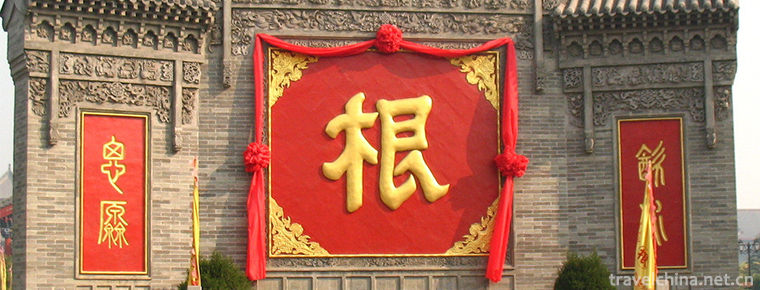
-
Pork ribs Noodles
Pork ribs Noodles are a traditional pasta, especially in Cantonese cuisine.
Views: 188 Time 2018-10-12 -
Ordos Cultural Tourism Village
Ordos Cultural Tourism Village is located in the front banner of Etok, Ordos City. It is located in the western Ordos grassland at the junction of Mengning and Ningxia. It is located in the beautiful .
Views: 403 Time 2019-01-08 -
Yanzidong in Jianshui County
Jianshui Swallow Cave is located in the Lujiang River Valley, more than 20 kilometers east of Jianshui County, Honghe Hani and Yi Autonomous Prefecture, Yunnan Province..
Views: 108 Time 2019-01-21 -
Zhalantun Scenic Area
Zhalantun Scenic Area is located in Hulunbuir City, Inner Mongolia, including Zhalantun City and the Greater Hinggan Mountains in the northwest. The mountains are dense with pine and birch.
Views: 144 Time 2019-01-25 -
Taiyuan Qingxu Baoyuan Old Vinegar Workshop
Taiyuan Qingxu Baoyuan Old Vinegar Workshop is located in Taiyuan City, Shanxi Province. It is the "Taiyuan Youth Heritage and Education Base". It has been awarded the "First Industrial.
Views: 170 Time 2019-02-13 -
Babao Green Crab Rice
Two crabs, 700g, 165G glutinous rice, 45g ham, 20g open onion, 45g white fruit, 75g peanut, dried mushroom, dried asparagus, onion, ginger slices, yellow wine, salt and clear soup (300g).
Views: 371 Time 2019-03-26 -
Tu Costume
Women usually wear embroidered small collar and long slant-skinned shirt. The sleeves are made of red, yellow, orange, blue, white, green and black seven-color cloth rings. They are bright and beautif.
Views: 187 Time 2019-06-23 -
The Custom of Collecting Ginseng in Changbai Mountain
The custom of collecting ginseng in Changbai Mountain has a long history. As early as the middle of the 3rd century, ginseng has been excavated. In order to survive and find, excavate and preserve gin.
Views: 153 Time 2019-07-25 -
Du Fu
Du Fu (712 - 770 years), Zi Zi Mei, from the Shao Ling old man, Tang dynasty Great realistic poets, and Li Bai It is called "Li Bai". Originally from Xiangyang, Hubei, Henan county. With two.
Views: 413 Time 2019-09-07 -
Overview of Guangyuan
In 2019, the GDP of Guangyuan will reach 94.185 billion yuan, an increase of 7.5% over the previous year, which is the same as that of the whole province. Among them, the added value of the primary industry was 15.301 billion yuan, an increase.
Views: 350 Time 2020-12-15 -
Plant resources in Meishan
There are 2278 species of wild plants belonging to 861 genera and 229 families in Meishan City, including 149 species of bryophytes belonging to 71 genera and 48 families, 155 species of ferns belonging to 73 genera and 36 families, 20 species of gymnosperms.
Views: 360 Time 2020-12-18 -
Yibin secondary industry
In 2019, the total industrial added value of Yibin City is 99.082 billion yuan, an increase of 9.5% over the previous year, and its contribution rate to economic growth is 45.5%. At the end of the year, there were 824 Industrial Enterprises above Designated Si.
Views: 106 Time 2020-12-18
